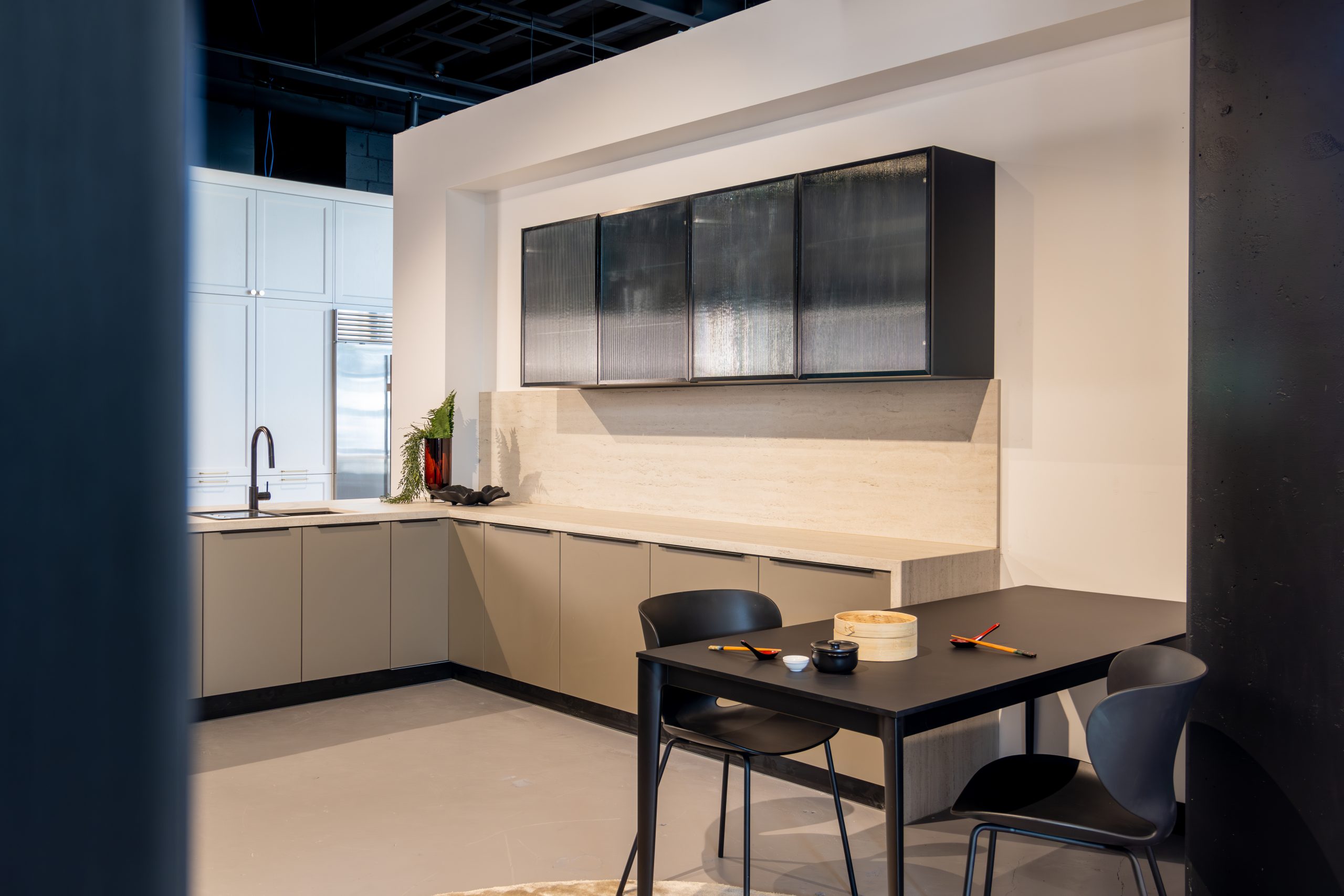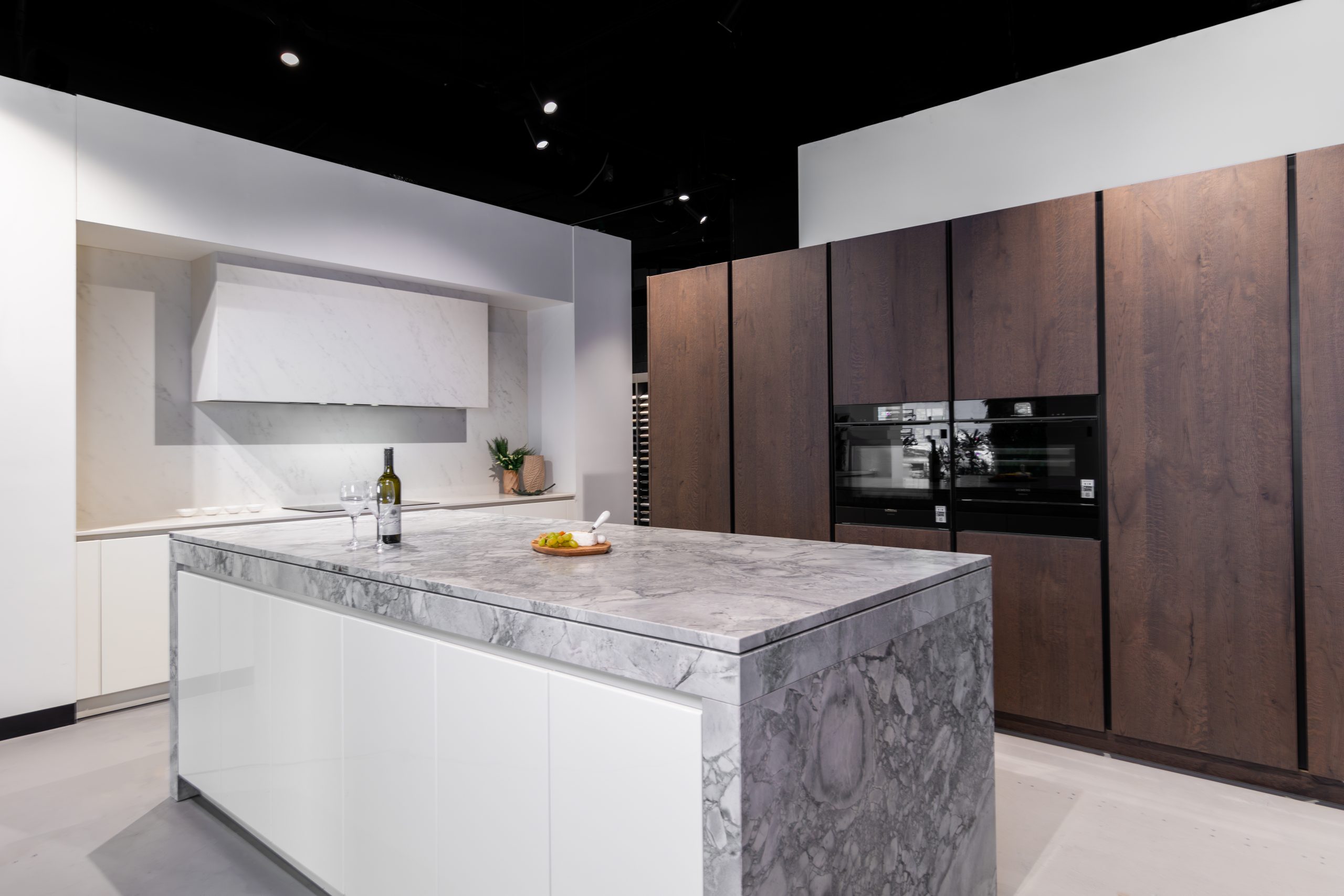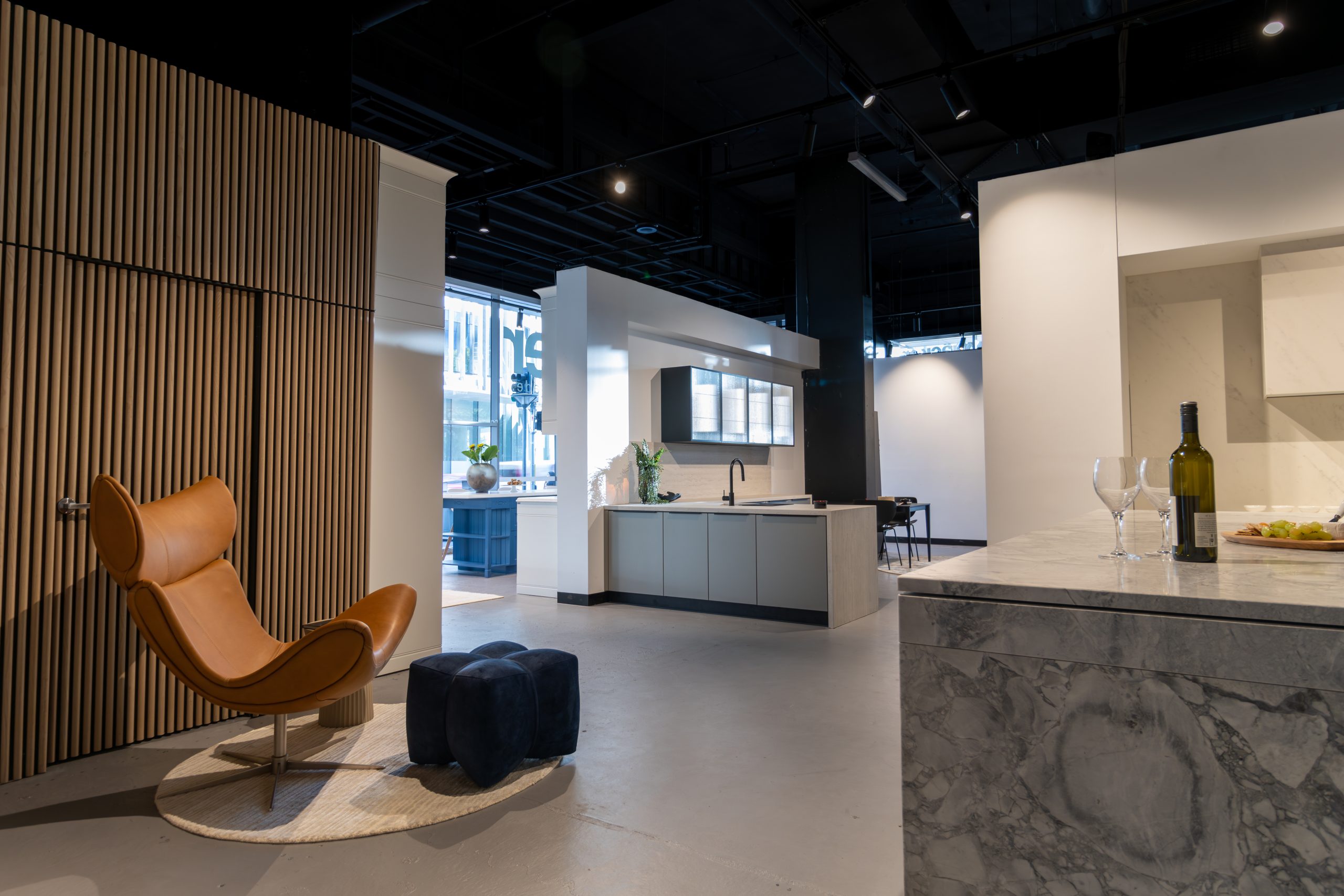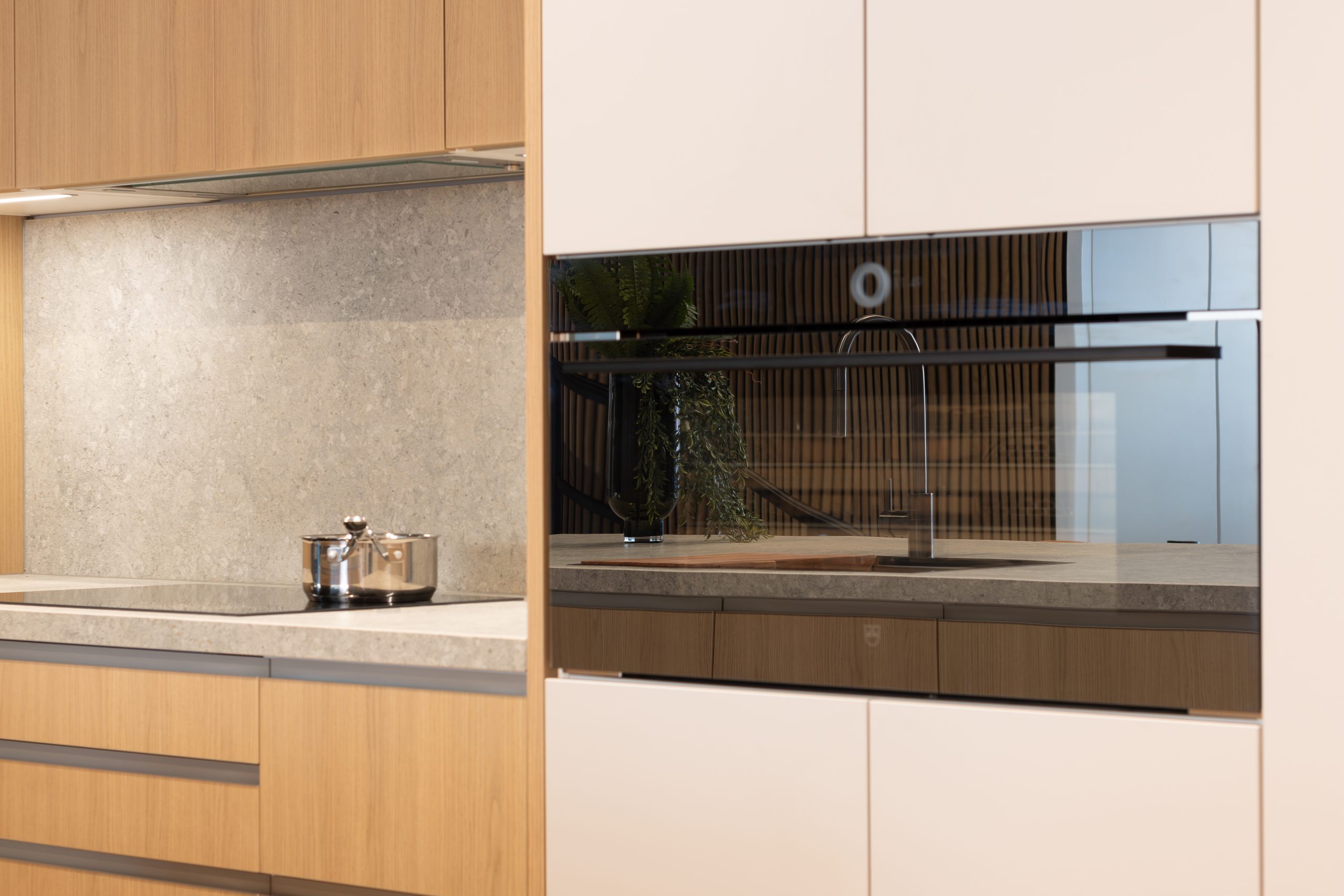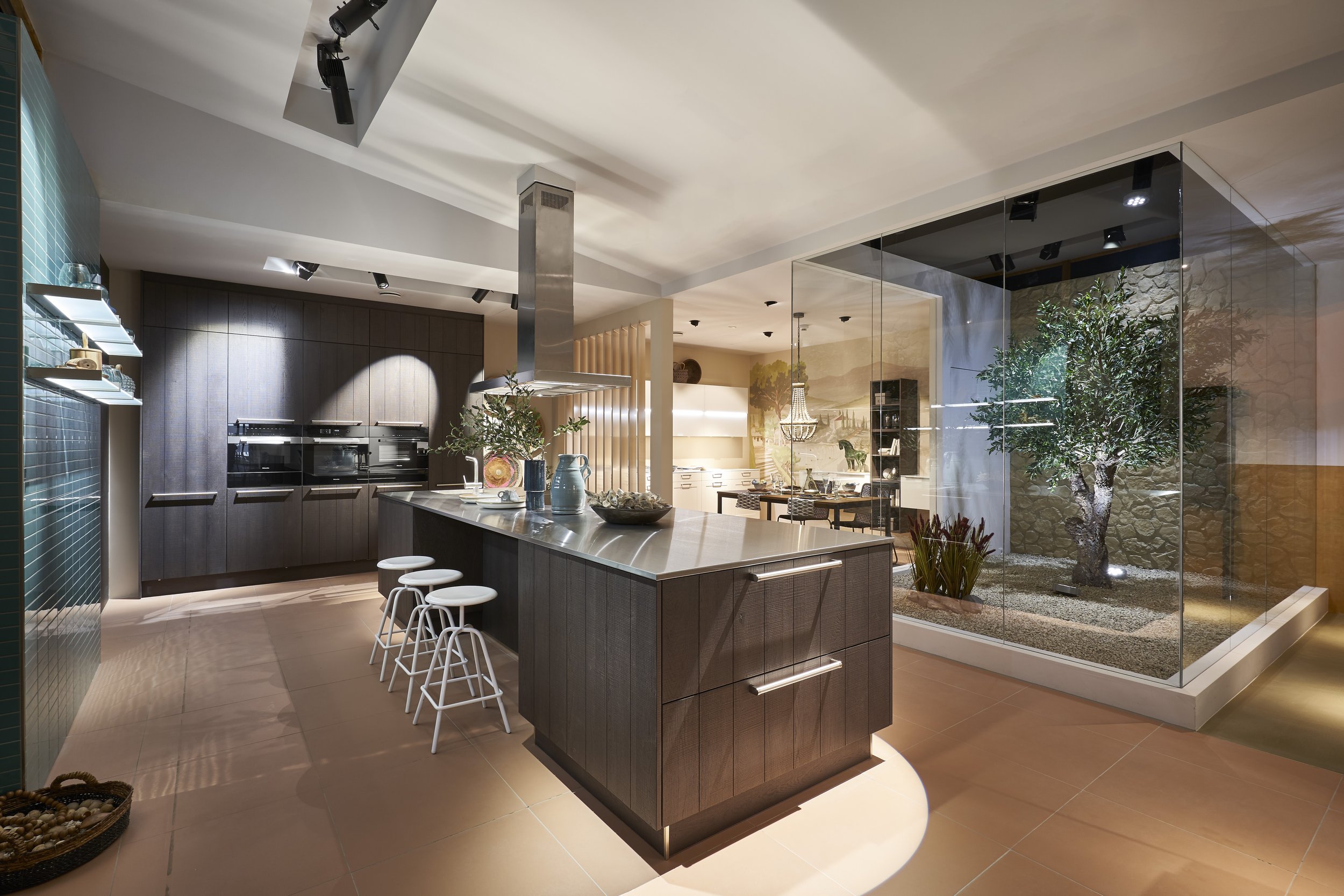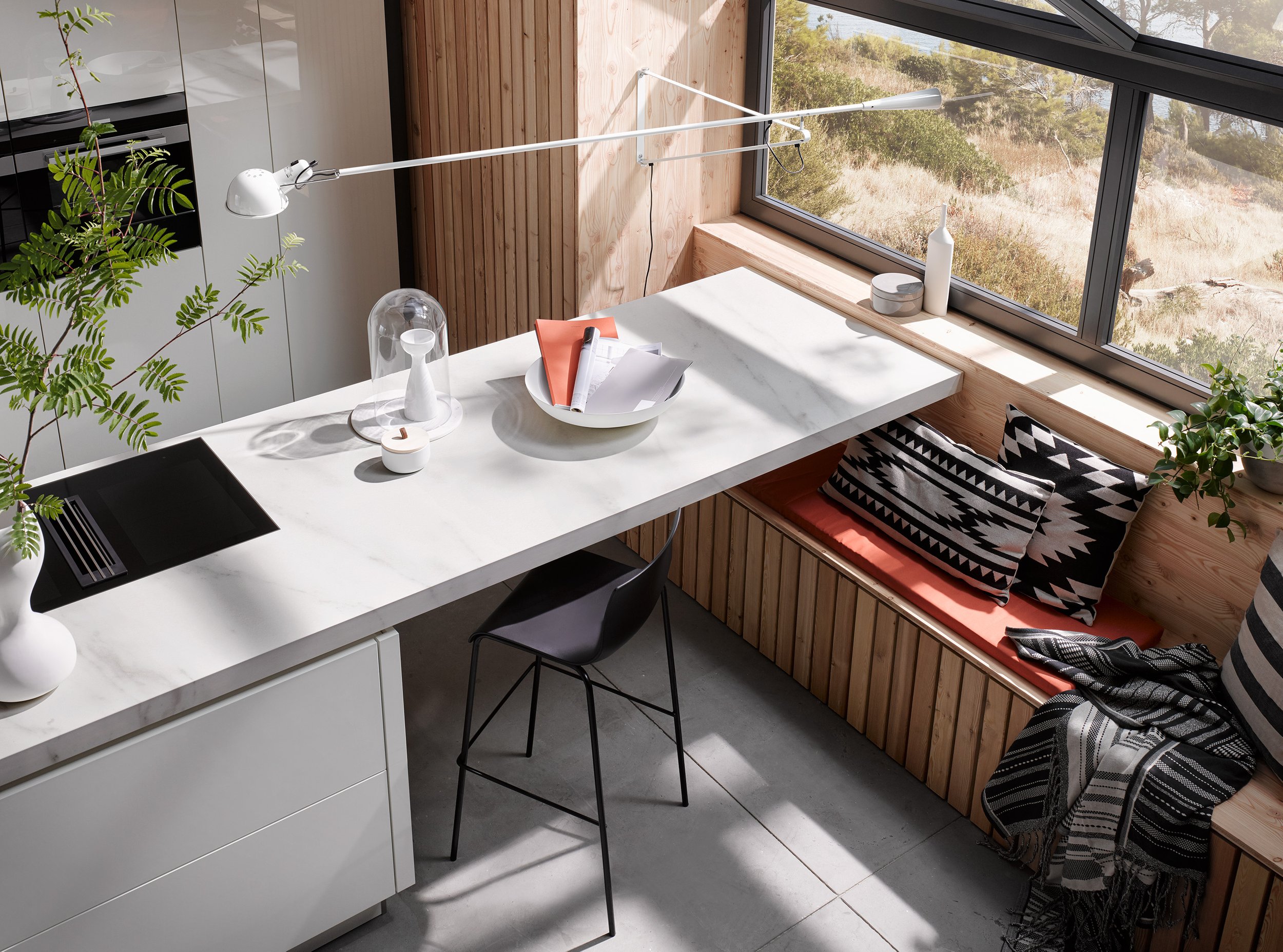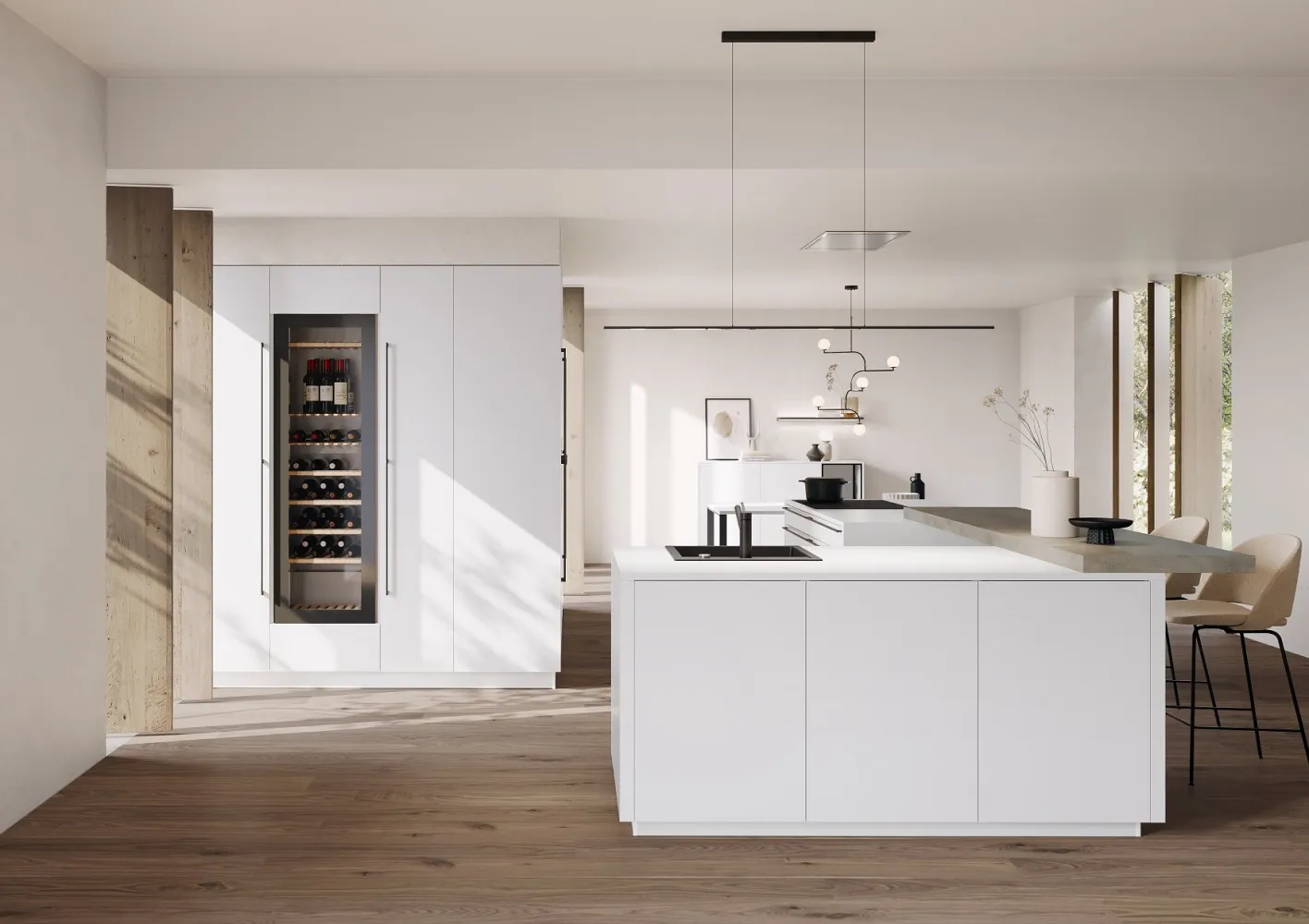
Kitchen Work Triangle: Optimise Your Space with the Kitchen Design Triangle
Imagine you’re scrambling eggs while the coffee brews, darting between the fridge, stovetop, and sink like you’re running a personal marathon. Sound familiar? If your kitchen has you doing laps just to make breakfast, you’re probably missing one of design’s most fundamental principles, the kitchen work triangle.
Whether you’re planning a renovation or just trying to understand why your current kitchen drives you mad, getting the work triangle right can transform your cooking experience from chaotic to seamless. Let’s break down this time-tested design principle and how it fits into today’s modern kitchens.
Top highlights
- The kitchen work triangle connects the sink, stove, and refrigerator in an optimal layout (each leg 4–9 feet), reducing wasted movement and boosting efficiency during cooking.
- Modern kitchens adapt the triangle concept to fit open-plan layouts, multiple cooks, and new appliances, sometimes replacing it with overlapping zones or multi-triangle setups.
- Common design mistakes like obstructed paths or improper spacing can disrupt workflow, but customising the triangle based on kitchen size and lifestyle ensures a smoother, more ergonomic cooking experience.
What is the Kitchen Work Triangle and Why Does It Matter?
The kitchen work triangle is a design concept that connects your three most-used work areas: the sink, hob (cooktop), and refrigerator. Think of it as creating an invisible triangle between these points, with each side measuring between 4 to 9 feet for optimal efficiency.
This isn’t just some designer’s fancy theory, it’s rooted in real functionality. The concept emerged in the 1940s when researchers studied kitchen workflows and discovered that these three zones handle about 90% of kitchen tasks. By positioning them strategically, you minimise unnecessary movement and create a natural cooking flow.
Here’s why it works so well:
- Reduces wasted steps: No more trekking across the kitchen with your hands full
- Improves cooking efficiency: Everything you need is within easy reach
- Creates safer workflows: Less crossing over hot surfaces or carrying sharp objects long distances
- Makes multi-tasking easier: You can monitor multiple cooking processes without losing your rhythm
The work triangle remains relevant because it addresses the fundamental way we use kitchens, even as our cooking habits evolve, we still need efficient access to cold storage, water, and heat.
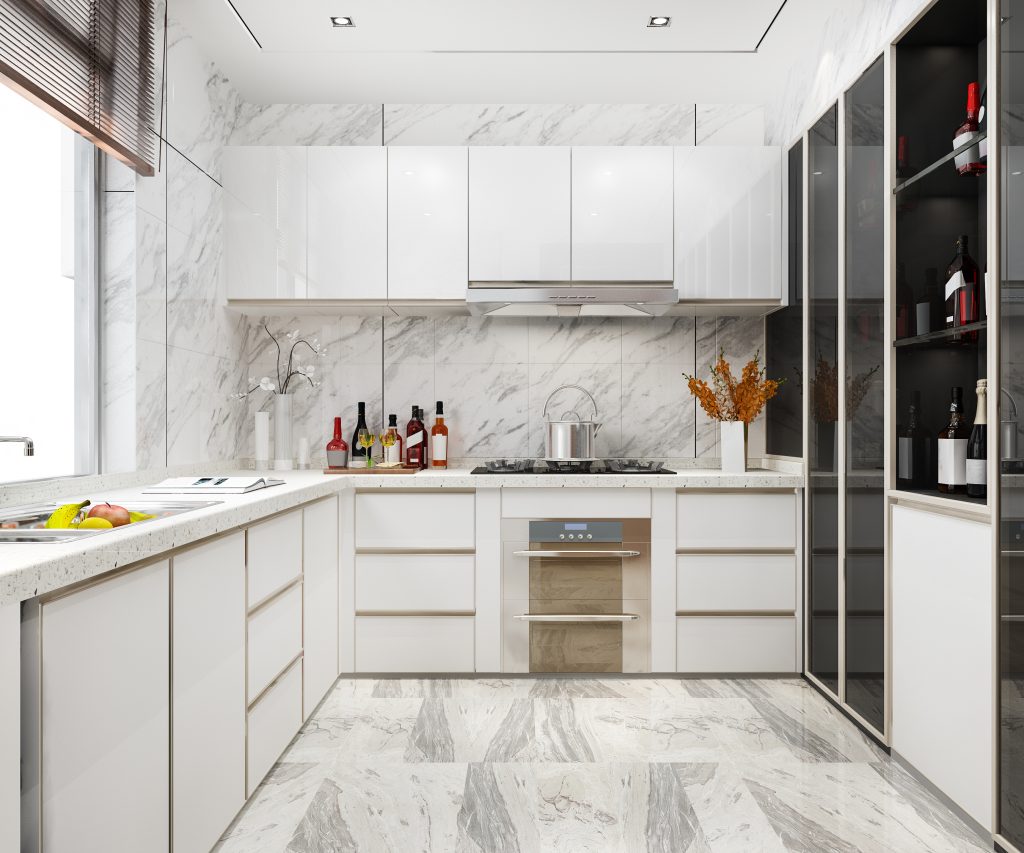
The Role of the Kitchen Work Triangle in Modern Kitchen Design
Modern kitchen design has certainly evolved since the 1940s, but the core principles of the work triangle remain surprisingly relevant. Today’s kitchens often serve multiple purposes, they’re social hubs, homework stations, and entertainment spaces, but efficient workflow is still crucial.
Contemporary designers now adapt the traditional triangle to accommodate:
Open-plan living: The triangle might extend into living areas, requiring careful consideration of traffic flow from other parts of the home.
Multiple cooks: Modern families often have several people cooking simultaneously, so designers might create overlapping triangles or work zones.
Kitchen islands: These popular features can either enhance or disrupt the triangle, depending on their placement and function.
Increased appliance variety: Beyond the basic three points, modern kitchens include dishwashers, microwaves, and specialty appliances that need integration into the workflow.
Research from the International Journal of Advanced Research in Science, Communication and Technology shows that ergonomic kitchen design principles, including the work triangle, significantly impact user satisfaction and cooking efficiency. The study found that well-planned kitchen workflows reduce physical strain and improve the overall cooking experience.
The key is adapting the triangle to your lifestyle rather than forcing your cooking habits into a rigid design framework.
Types of Kitchen Layouts and Their Relationship with the Work Triangle
Different kitchen layouts work better or worse with the traditional work triangle concept. Here’s how various configurations stack up:
| Layout Type | Triangle Compatibility | Best For | Considerations |
| Galley | Excellent | Small spaces, single cooks | Keep triangle compact; avoid placing all three points on one side |
| L-Shaped | Very Good | Medium spaces, open-plan homes | Natural triangle formation; good for kitchen islands |
| U-Shaped | Good | Larger spaces, serious cooks | Risk of triangle being too large; consider breaking into zones |
| Single Wall | Poor | Tiny spaces, budget constraints | Linear workflow rather than triangular |
| Island/Peninsula | Variable | Large spaces, multiple cooks | Can enhance or complicate triangle depending on placement |
| Open-Plan | Moderate | Modern homes, entertaining | Triangle may extend into living areas; traffic flow crucial |
The most successful kitchen designs adapt the triangle principle to their specific layout rather than forcing a layout to accommodate a perfect triangle.
Common Mistakes to Avoid When Applying the Kitchen Work Triangle
Even with good intentions, it’s easy to get the work triangle wrong. Here are the most common mistakes that can turn your kitchen into a frustrating maze:
Appliances Too Far Apart When triangle legs exceed 9 feet, you’ll find yourself doing unnecessary cardio while cooking. This often happens in large, sprawling kitchens where the fridge ends up in a separate area or the sink is positioned too far from cooking zones.
Obstructed Pathways Islands, peninsulas, or even dining tables can interrupt your triangle flow. The most efficient triangles have clear pathways with no obstacles blocking movement between points.
Inadequate Lighting Poor lighting can make even a perfectly planned triangle feel awkward and unsafe. Each point of your triangle needs adequate task lighting – pendant lights over islands, under-cabinet lighting for prep areas, and good general illumination throughout.
Ignoring Traffic Patterns Positioning your triangle where family members naturally walk through creates constant interruptions. The main traffic flow through your kitchen should bypass, not bisect, your work triangle.
Triangle Too Small While efficiency is important, cramming everything into a tiny triangle creates its own problems. You need enough counter space near each point to actually work effectively.
Forgetting the Fourth Point Modern kitchens often need to consider the dishwasher as a fourth point, especially since it works closely with the sink. Ignoring this relationship can create awkward workflows when cleaning up.
How to Customise the Kitchen Work Triangle for Your Needs
The beauty of the work triangle lies in its flexibility. Here’s how to adapt it to your specific situation:
For Small Kitchens Focus on creating the most compact, efficient triangle possible. Consider:
- Placing the sink in a corner to maximise counter space
- Using a compact fridge that doesn’t dominate the space
- Installing a cooktop rather than a full-size range to save room
For Large Kitchens Break your space into multiple work zones rather than stretching the triangle beyond practical limits:
- Create a primary triangle for daily cooking
- Add secondary prep zones for baking or special tasks
- Consider multiple triangle configurations for different activities
For Multiple Cooks Design overlapping or parallel work zones:
- Ensure each cook has access to water (second sink or main sink)
- Provide multiple prep areas to avoid conflicts
- Consider duplicate appliances for high-use items
For Open-Plan Spaces Integrate the triangle with your living areas:
- Position the triangle to face social areas for interaction while cooking
- Ensure the triangle doesn’t interfere with main traffic flows
- Use kitchen islands to define cooking zones within larger spaces
As noted by Cyncly’s design experts, the most successful kitchen designs start with understanding how you actually use your space, then adapt the triangle principles accordingly.
FAQs
What is the ideal distance between points in a kitchen work triangle?
Each leg of the triangle should measure between 4 to 9 feet, with the total perimeter ideally between 12 to 26 feet. This range provides efficiency without cramping or excessive walking. Distances shorter than 4 feet create cramped working conditions, while anything over 9 feet means too much walking between tasks.
Does every kitchen require a work triangle to function well?
Not necessarily. Very small kitchens might work better with a linear workflow, while very large kitchens might benefit from multiple work zones instead of one large triangle. The key is creating efficient pathways between your most-used areas, whether that forms a triangle or another logical pattern.
What are the alternative layouts to the work triangle in today’s kitchens?
Modern alternatives include:
- Work zones: Separate areas for prep, cooking, cleaning, and storage
- Kitchen islands with integrated functions: Combining multiple triangle points in one central location
- Linear workflows: Especially effective in galley kitchens
- Multi-triangle designs: For kitchens with multiple cooks or specialised cooking areas
The work triangle remains one of the most practical design principles for creating efficient, enjoyable kitchens. While modern living has expanded beyond the traditional model, the core concept of minimising unnecessary movement between your most-used areas still holds true.
Remember, the best kitchen design is one that works for your specific needs, cooking habits, and lifestyle. Whether you follow the triangle religiously or adapt it creatively, the goal is the same: creating a space that makes cooking feel effortless rather than exhausting.
Ready to transform your kitchen into a more efficient workspace? The principles are straightforward, but the implementation depends entirely on your unique situation and needs.

